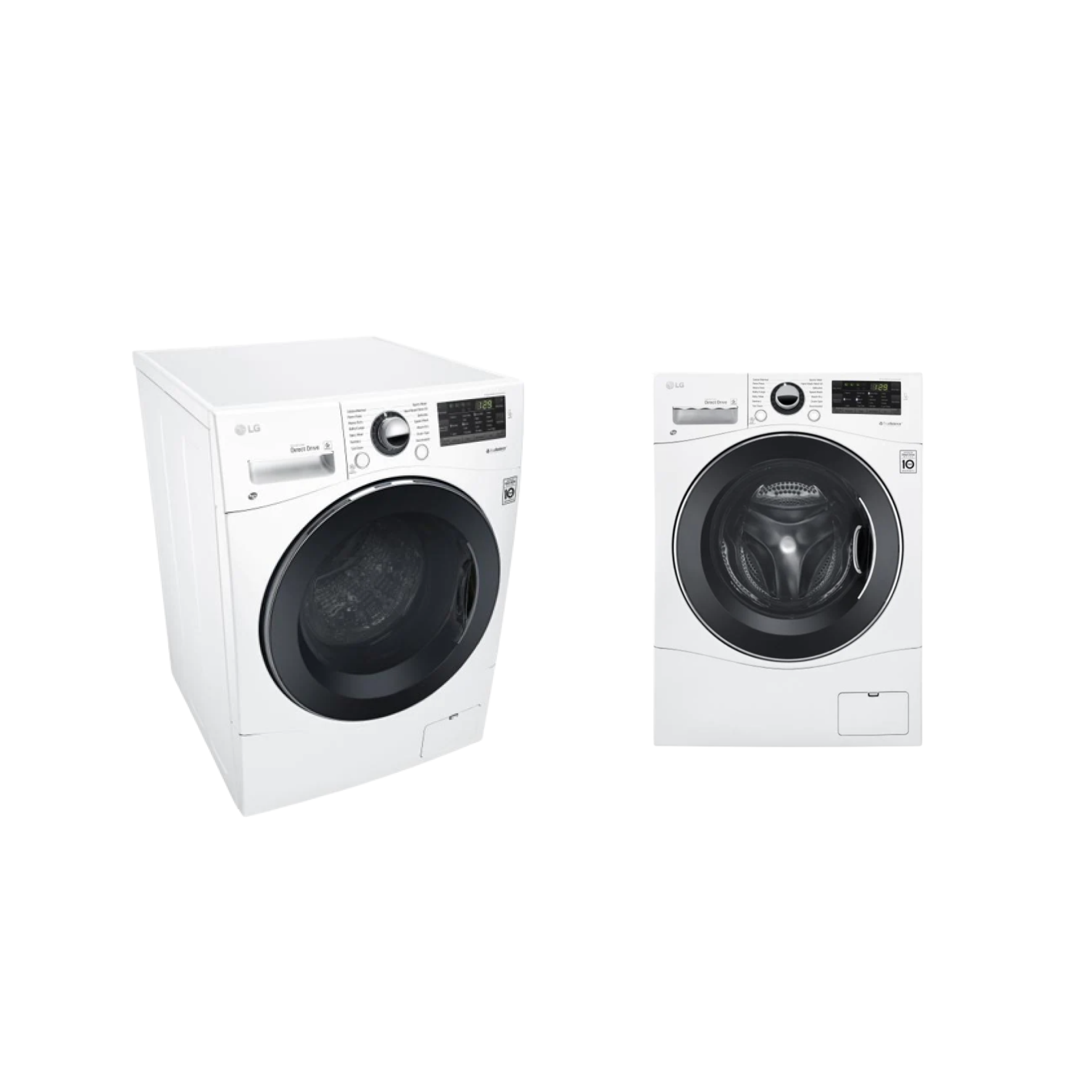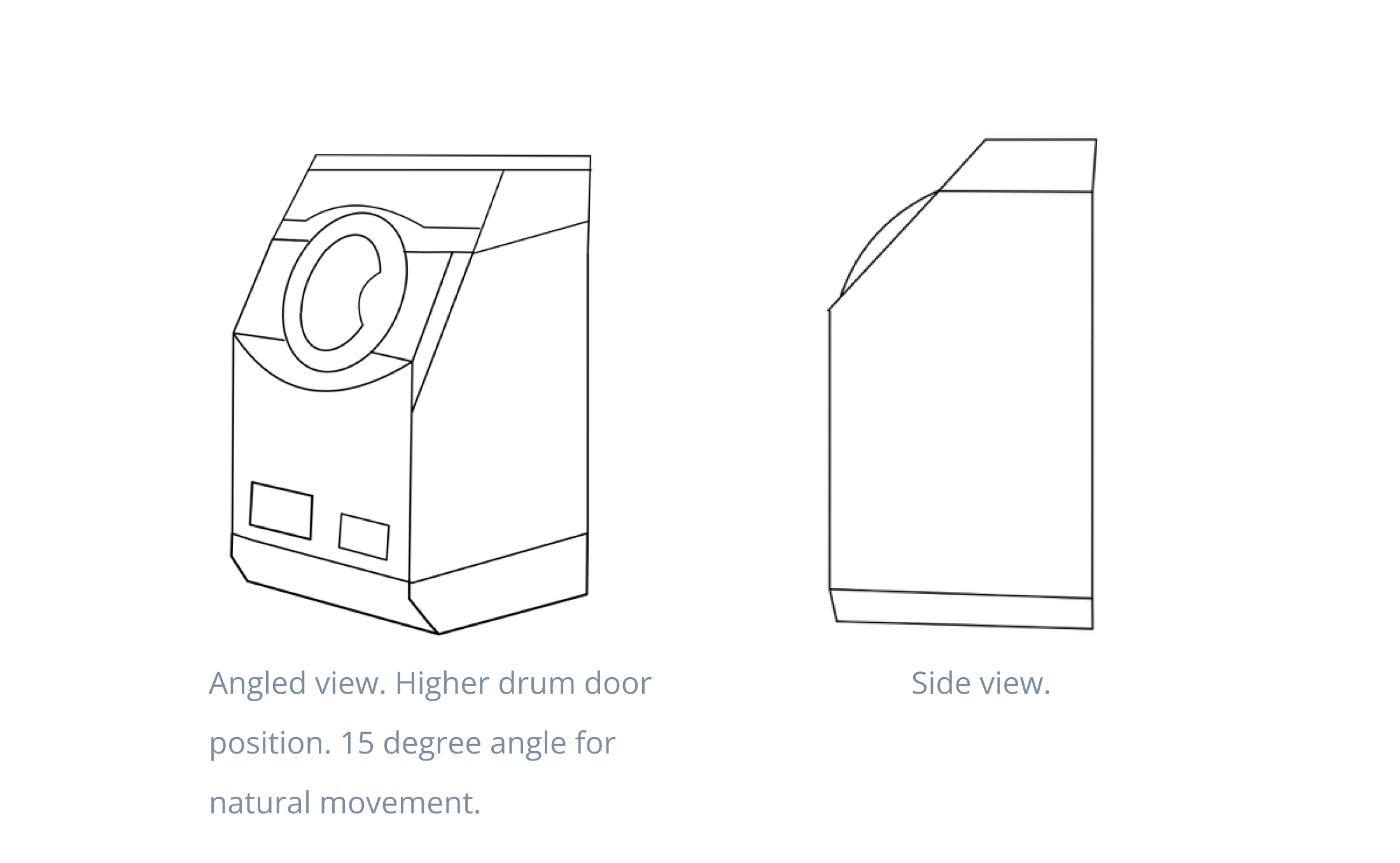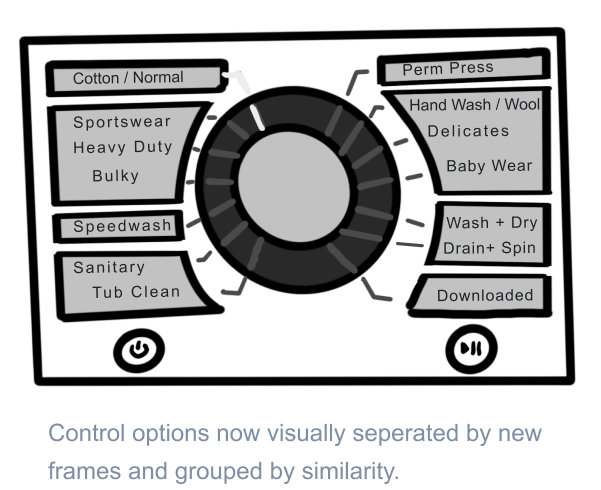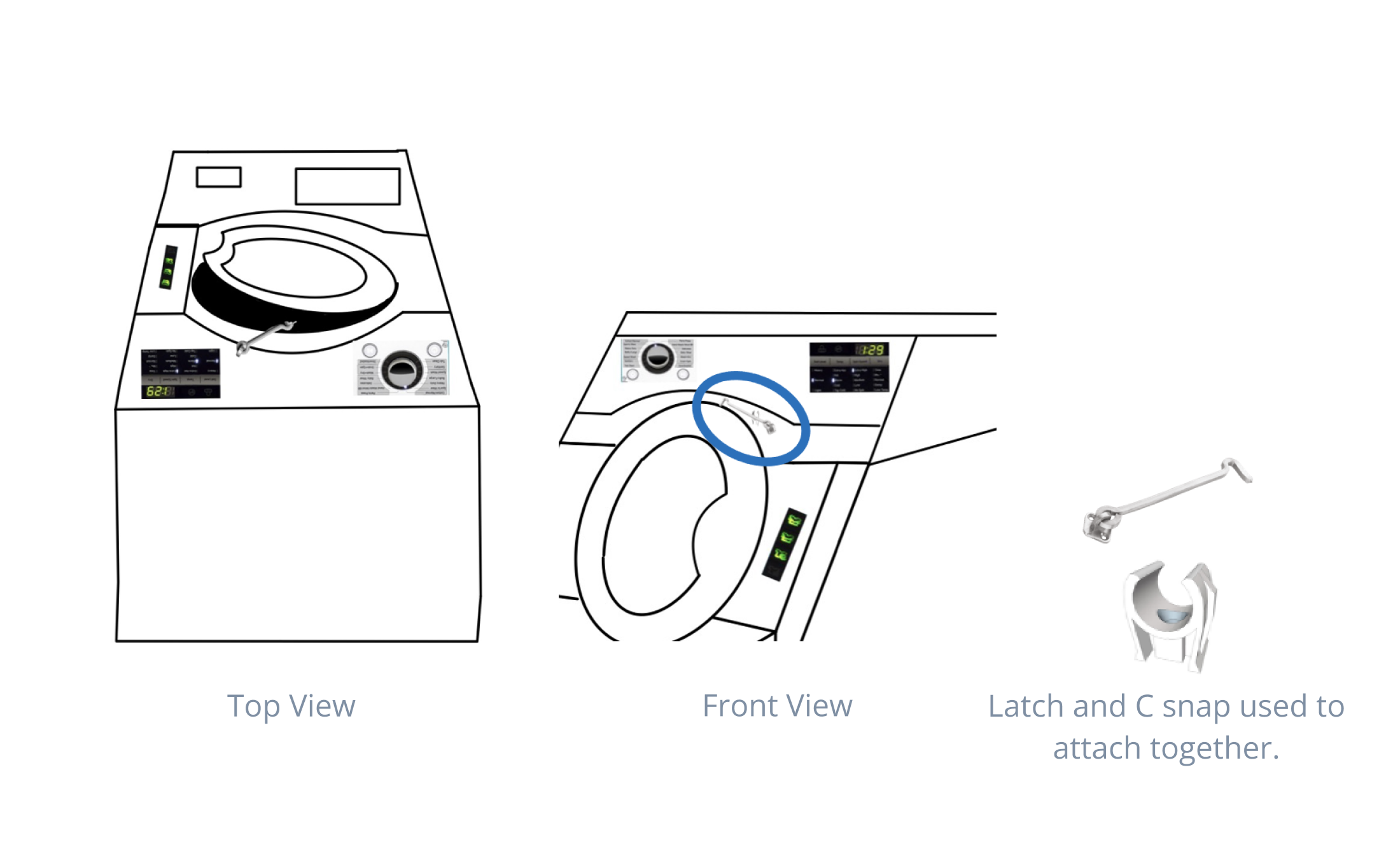
LG Model #WM3488H
All-in-One Washer and Dryer Unit
Human Factors and UX Evaluation
About LG Model #WM3488H
The LG Model #WM3488H is also known as the White Compact All-in-One Front Load Washer and Dryer Electric Ventless Combo.
It is the current best seller for washer and dryer combos, however, it has been reported as a poor product by many users. Many think the convenience of having a combination unit would reduce effort and time, and as a result, improve task performance, proving to be a positive user experience.
Unfortunately, this is not the case.
Context
The purpose of this design evaluation is to evaluate the design of this product from a human factors perspective.
The evaluation was conducted in the Fall of 2020 for my semester project in my Human Factors in Engineering Design class.
Team: Group project
Key skills: user research, heuristic evaluation, sketching
Course: Human Factors in Engineering Design
“Unless you have no other choice, an all in one, single drum, washer-dryer combo is almost never the best way to do your laundry”
- NY Times
The Problem
Unfortunately, the reality is that washer and dryer combo units are not as efficient and convenient as many imagine.
If combo units worked well, they would be seen everywhere; however, the machines are not popular today.
Our research revealed a number of issues.
The Goal
The goal is to perform a human factors analysis, identifying design flaws and determining what can be done to improve the combo unit experience.
At the end of this analysis, a number of design solutions will be recommended for a future design iteration of the machine.
Understanding the User
-
| Surveys
A survey was distributed to interested customers. Survey questions were focused on key interests and user expectations.
-
| User Interviews
Volunteer subjects were interviewed and asked about the context of their laundry experiences (e.g. In what contexts do you typically do your laundry?).
-
| Market Research
Customer reviews revealed a number of complaints and issues experienced by former users.
It was important to address these issues in the future redesign of this unit.
Persona Building
A persona was created to represent our target user.
Rebecca is a 26-year-old professional who lives in a small urban apartment. She is someone who is always on the go, and therefore enjoys smart appliances.
Rebecca was created to help guide our design decisions throughout our design process.
Key Problems
4 Primary Problems
Our research identified 4 primary problems.
Anthropometry
Controls and Displays
Child Safety
Maintenance and Upkeep
By addressing these 4 problems, a future design of the laundry unit can be improved to provide a better experience.
Human Factors Flaws
-
1. Anthropometry
The door height and drum angle require users to transfer loads of laundry at an uncomfortable height and angle.
-
2. Controls and Displays
The controls and displays violate the principle of similarity.
Users complained about having difficulty locating the appropriate wash or dry setting.
Combining washer and dryer settings into one unit can cause visual clutter.
-
3. Child Safety
Many raised concerns about child safety.
Because the drum door must remain open to allow airflow, many saw it as a risk for child entrapment.
-
4. Maintenance and Upkeep
People often forget they need to constantly drain and clean the filter.
This is especially needed with a combo unit because the unit does not have a dryer vent. As a result, there is a need for frequent maintenance and upkeep.
Human Factors Recommendations
A number of Human Factors design solutions were explored to address the primary issues of anthropometry, controls and displays, child safety, and maintenance and upkeep.
Anthropometry
Solution: Altering Drum Door
The drum door currently sits at a low height, requiring users to insert and transfer laundry loads in an uncomfortable position. A major key finding revealed that people preferred the drum door position at 100cm (or 39.37in) above surface level.
Our design also includes an alteration in the drum door angle, placing it at an angle of 15˚, an angle that is more natural and fluid for transferring loads of laundry.
I created a low fidelity sketch to visualize our group's redesign.
Controls and Displays
The controls lack similar grouping, resulting in visual clutter and confusion.
To improve the controls and display design, our group explored the following solutions:
The dial control interface options were rearranged and grouped together by similarity.
The groups were visually separated by frames.
A low fidelity sketch was created to visualize these changes.
Child Safety
The unit should have a physical latch to act as a safeguard for children climbing into the door. The latch is supposed to connect to the C snap, preventing any further opening or closer.
IThe latch additionally serves to allow airflow to reduce moisture inside the unit.
The unit should also have soft closing hinges to decrease speed and force upon closing.
Maintenance and Upkeep
To reduce moisture inside, a latch and C snap were added above the drum door. This adds airflow into the unit, preventing mold build up.
The latch and C snap also serve to lock the drum door, preventing any potential incidences.
An equipment drawer was added for easy and convenient storage.
The drain filter was positioned higher for better visibility.
Gathering Feedback
Iteration Feedback
Results:
100% of the volunteer subjects saw the designs as overall improvements to the design. However, given they were only presented with a 2D digital representation of the prototype. A future evaluation would implement a physical, interactive prototype.
Latch Comments:
The latch was seen as functional and effective, but the appearance was weird. A future would include a better, more natural design.
Drain Filter Comments:
Many people did not know they need to clean their laundry units.
Our subjects felt that by making the filter visible, they would be more likely to clean it. They also said having provided cleaning tools with a simple guide would increase their chances of performing the task.
9 volunteer subjects were presented with the evaluation and design changes.
Future Directions
There are a number of directions the evaluation could be expanded and further analyzed.
-
A potential use case for the combo unit is for people living in their RV or van.
This use case was not considered in our evaluation and should be analyzed for future analyses.
-
A physical prototype could be created to simulate the physical experience.
-
On-site user testing would be important to conduct in order to gather usability metrics for task performance.
-
More designs can be iterated and explored based on the continuous feedback.
Limitations
-
Remote Evaluation
The evaluation was conducted remotely during COVID-19, therefore we were limited from conducting any in-person testing.
-
Limited Expertise | Engineer Wanted
A future evaluation would onboard more people from different backgrounds, such as an engineer. An engineer would be able to guide us towards design iterations that are appropriate and feasible.






